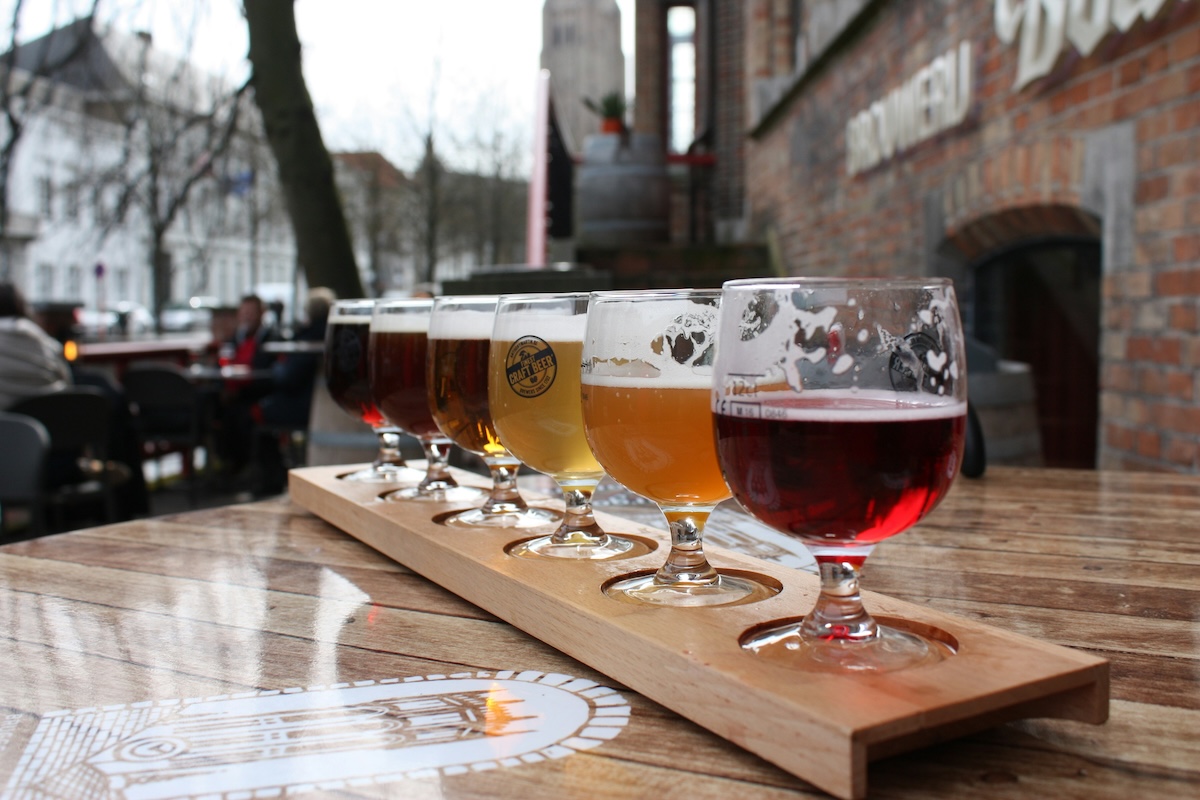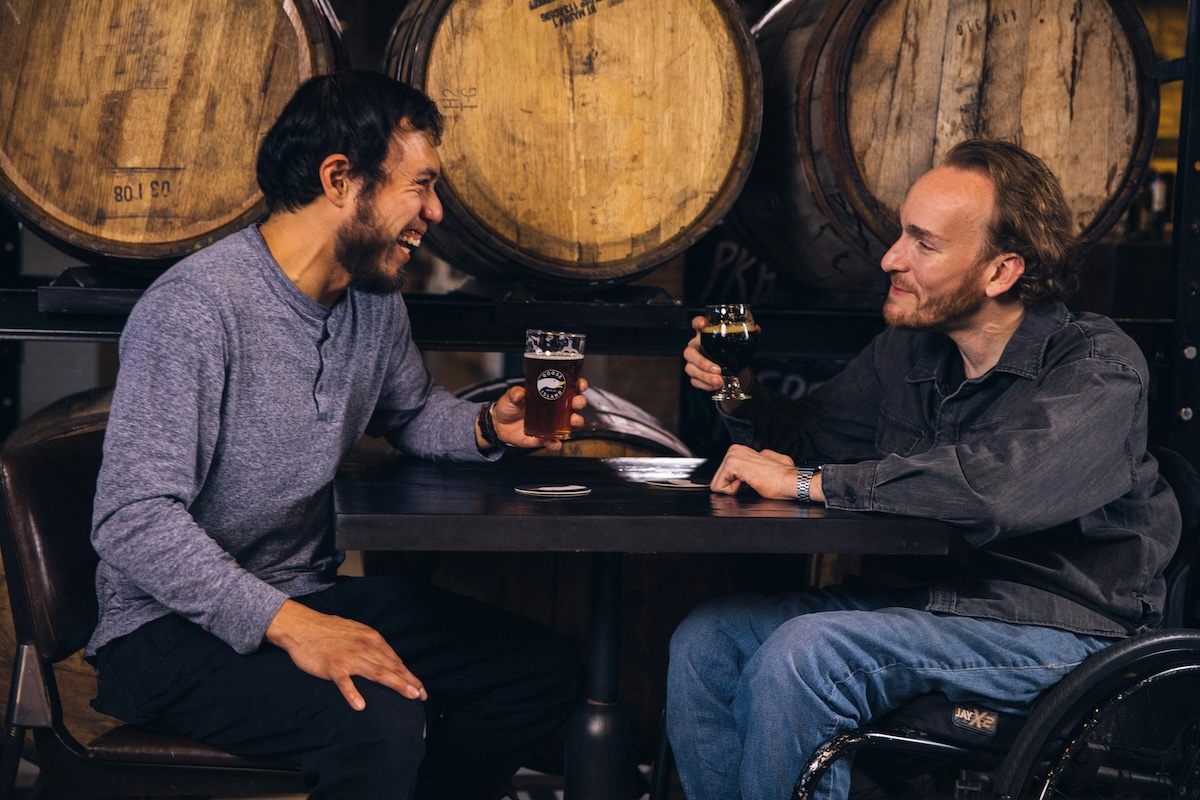By: Sarah Stone
Craft beer, at its core, refers to beer made by small, independent breweries with a focus on quality, flavor, and brewing technique rather than mass production.
While definitions vary based on region and organization, one description of a craft brewer—via the Brewers Association—is that it’s small (annual production of 6 million barrels of beer or less), independent (less than 25% owned or controlled by an alcoholic beverage industry member that’s not a craft brewer), and traditional (the majority of its total beverage alcohol volume comes from beers that derive flavor from traditional or innovative brewing ingredients).
While the term “craft beer” is modern, the concept of specialized, local brewing goes back thousands of years. Ancient civilizations, including the Sumerians, Egyptians, and Chinese, all had their forms of beer, often tied to religious or cultural ceremonies.
Monasteries in Europe played a crucial role in brewing beer. Monks refined brewing methods and even introduced hops to stabilize and flavor beer. Each monastery would have its unique recipe, helping to develop the diversity of beer we see today.
Then, with the advent of the Industrial Revolution, beer production shifted from artisanal, local methods to industrialized, mass-produced methods. This led to a decline in the variety and flavor profiles of beers, especially in the United States post-Prohibition.
The Rise of Modern Craft Beer

Photo by Timothy Hales Bennett on Unsplash
The roots of the modern craft beer movement can be traced back to home brewing. In places like the UK, home brewing has a long history. In the US, President Jimmy Carter signed a bill (HR 1337) legalizing it in 1978, which sparked a wave of beer enthusiasts experimenting at home.
These homebrewers then took their passion commercially, leading to the rise of microbreweries—small-scale breweries focusing on quality, flavor, and traditional brewing methods. Unrestricted by the demands of mass production, craft brewers began experimenting with various ingredients, brewing techniques, and beer styles from around the world. This resulted in a plethora of flavors and styles, from hop-heavy IPAs to rich stouts, tangy sours to fruity lambics.
Craft beer emphasizes locality. Many craft breweries pride themselves on using local ingredients and catering to local tastes. The fresh, direct-to-consumer approach resonated with consumers who were growing tired of generic, mass-produced beers. This, coupled with water-saving techniques and use of renewable energy sources has placed an emphasis on sustainability.
The emphasis with craft beer is on quality ingredients, brewing techniques, and innovation. The movement has led to thousands of breweries opening worldwide—creating jobs, revitalizing local economies, and becoming focal points of communities. And many breweries have taprooms or pubs, encouraging beer tourism.
Where Can You Find the Best Craft Beers?
Of course the question of what the best craft breweries are is totally up to you—but if you’re interested in embarking on a craft beer tour, here are some fantastic destinations!
United States
Portland, Oregon: Often dubbed “Beervana,” Portland is a craft beer haven. The Pacific Northwest is also a major hop-growing region, supplying a key ingredient for many beer styles. Portland’s culture embraces local, artisanal, and craft products, making it fertile ground for experimental and traditional brewing alike.
San Diego, California: San Diego is particularly renowned for its IPAs. The city’s craft beer culture is deeply rooted, with over 150 breweries, brewpubs, and microbreweries. The region’s emphasis on flavor-packed, hop-forward beers has made it an influential hub in the craft beer world.
Denver, Colorado: Beyond the Rocky Mountain water source, which many brewers swear by, Denver hosts the annual Great American Beer Festival—one of the largest beer festivals in the world. Colorado itself is home to numerous craft breweries, with Denver serving as its beer-centric heart.
Belgium
Brussels and surrounding regions: Belgium boasts centuries-old beer traditions, including unique fermentation methods and beer styles not found anywhere else, like Trappist brews and lambics. Belgium’s beer culture is UNESCO protected, emphasizing its deep cultural significance.
Germany
Bamberg: Bamberg, in the Franconia region, is home to a dense concentration of breweries and has a UNESCO-protected old town. Its Rauchbier (smoked beer) provides a unique tasting experience, and the town’s dedication to maintaining its beer purity and tradition makes it special.
Munich: While globally known for Oktoberfest, Munich has a rich brewing history beyond this event. With its Reinheitsgebot (a beer purity law) and iconic beer halls, Munich is a pilgrimage site for those who love traditional Bavarian beers.
United Kingdom
London: Historically known for porters and stouts, modern London has embraced the craft beer revolution wholeheartedly. From innovative new styles to reviving forgotten old ones, London’s beer scene is vibrant, diverse, and ever-evolving.
New Zealand
Wellington: New Zealand, while known for its wines, has an emerging craft beer scene with Wellington at its epicenter. The country’s pristine environment provides high-quality ingredients, and Kiwi brewers often bring a touch of local flavor, experimenting with native plants and flavors.
Australia
Melbourne: Australia’s craft beer scene has boomed, and Melbourne, with its vibrant food and drink culture, is at the forefront. From hoppy ales to robust stouts, the city’s breweries showcase both local and global flavors.
South Africa
Cape Town: South Africa’s craft beer industry has seen rapid growth, with Cape Town leading the charge. Drawing inspiration from European and American beer cultures, Cape Town adds its unique twist, often using local ingredients to craft distinct flavors.
Japan
Tokyo: While Japan is primarily known for sake, its beer scene—and particularly craft beer—is burgeoning. Tokyo, as a cosmopolitan hub, has embraced and innovated on global beer styles, creating brews that are a fusion of international techniques and Japanese precision.
Many of the breweries that you can visit offer a full lineup plus flights, and even pubs or tap rooms where you can enjoy a bite with your brew.
Frayed Passport readers—where have you enjoyed the best craft beers on your travels? Share your stories and insights with the community!
About the Author
 As the editor-in-chief of Frayed Passport, my goal is to help you build a lifestyle that lets you travel the world whenever you want and however long you want, and not worry about where your next paycheck will come from. I've been to 20+ countries and five continents, lived for years as a full-time digital nomad, and have worked completely remotely since 2015. If you would like to share your story with our community, or partner with Frayed Passport, get in touch with me at sarah@frayedpassport.com!
As the editor-in-chief of Frayed Passport, my goal is to help you build a lifestyle that lets you travel the world whenever you want and however long you want, and not worry about where your next paycheck will come from. I've been to 20+ countries and five continents, lived for years as a full-time digital nomad, and have worked completely remotely since 2015. If you would like to share your story with our community, or partner with Frayed Passport, get in touch with me at sarah@frayedpassport.com!


